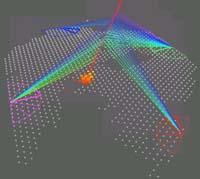Harvest of Science 2007

Thus, according to Science, this year advances in the sequencing and study of the human genome predominate. In fact, in 2003 it was reported that the human genome was sequenced in its entirety, but the work did not end. On the contrary, it can be said that it was a beginning, a starting point.
As sequencing techniques have been improved, the human genome has been compared with that of other species. Now researchers have taken another step and analyzed the differences between people. This is what has given importance to those of the journal Science. According to them, it is a new concept, researchers who until recently resembled man and chimpanzee, and now look at the particularities of each person. This has a great influence, among other things, on the way we look at ourselves, on privacy and on the way doctors face diseases.
The key is in the SNPs. SNPs are small changes in the bases that form DNA. Studies conducted in 2007 have found that these changes are more important than expected and have shown that in some cases they are related to diseases such as type 2 diabetes.
In addition, the latest research on the genome has helped to better understand the keys to other diseases such as colon and breast cancers, bipolar mixture, autoimmune diseases, hypertension, multiple sclerosis or rheumatoid arthritis.
And they have also discovered that, in the period of a few generations, part of DNA can be displaced or duplicated, which affects genetic activity. For example, it has been observed that in starchy diet societies, people have more copies of genes to digest starch than in hunter-gatherer societies.
Below list
Therefore, taking all this into account, genome research has been put in the first place. In the second is cellular reprogramming. Through reprogramming, an adult cell becomes a kind of stem cell, capable of becoming any other type of cell. Hence new therapies for today incurable diseases can be derived, thus avoiding the ethical problems of embryo stem cells.

In the Science list, however, not everything is genes and cells, other topics also have room. Third is the cosmic rays that act against the Earth's atmosphere. These cosmic rays have been examined at the Argentine observatory Pierre Auger and have seen where they are generated.
Fourth, however, man appears again and its functioning. In particular, the identification of some visual receptors acting on different body systems is explained. From there new materials, spines, development of viruses and vaccines against cancer, synthetic chemistry, brain research and artificial intelligence appear.
Other classifications
In addition to Science journals, others produce lists, among which are those of Time. In total, it produces 50 lists that include five within science: scientific discoveries, medicine, green ideas, natural disasters and man-made disasters.
The list of the main discoveries resembles that of the journal Science, which first classified cellular reprogramming, second the study of the human genome and third the detection of the brightest supernova.
In the medical section, studies are investigated that show that circumcision protects men from AIDS, breast cancer screening tests with metastases and first human vaccines against avian influenza.

The list of green ideas includes initiatives that contribute to the environment. In this way, the IPCC has been the first international community in charge of climate change. In the second, the American organization USCAP. The aim of this organization is to reduce carbon dioxide emissions to the atmosphere by 60-70% by 2050. Behind them have been classified green shops, shops or commercial chains that sell products made and distributed with the lowest possible environmental impact.
In the list of natural disasters appear the cyclones of Bangladesh in the first place and global warming in the human catastrophe. Although on other occasions there have been no big surprises, there is no doubt about it. In fact, climate change and global warming have been the main themes of this year, not only in the scientific and research fields, but also in the political and social spheres. And surely next year will also be the subject of study and debate.
Published in Gara
Buletina
Bidali zure helbide elektronikoa eta jaso asteroko buletina zure sarrera-ontzian











